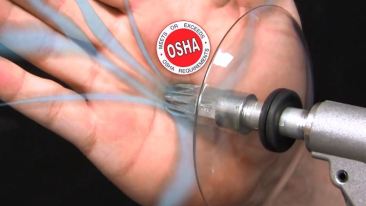The Occupational Safety and Health Act was signed by Richard Nixon in 1970. Under the United Sates Department of Labor, shortly thereafter; OSHA, or the Occupational Safety and Health Administration was born. OSHA is a large regulatory agency tasked to assure safe and healthy working environments by setting and enforcing standards as well as to provide training, outreach and assistance. Although some people’s first response is to cringe at the word OSHA, they have been instrumental in dramatically reducing injury rates and injury costs without negative effects on employees or companies.
Sure we can all cringe by looking up OSHA horror stories on YouTube. And many of us have a story about that one company that was fined 10’s of thousands of dollars for x, y, or z violations… But in reality, OSHA are not the bad guys. They are not looking for fines, in fact they generally give warnings and timelines to fix possible issues, prior to an incident. The fines typically are generated when companies fail to comply. Yes, I know there are always exceptions, but exceptions are not the rule. We hear and hold on to the radical stories, and the day to day, mundane stories fall to the wayside. Regardless of how we feel, we all must comply.
When it comes to EXAIR products, there are two OSHA standards that we must adhere to. One is related to “sound” and one is related to “dead end pressure“.
First let’s look at the dead end pressure. OSHA Safety requirement 29 CFR 1910.242 (b) discusses the possibilities for air embolisms when more than 30 psi is “dead ended” into your skin. EXAIR products have pathways for air to exhaust so that they cannot be “dead ended”. Each product has a way for the air to exhaust to avoid danger. Here are a couple of examples:


Take note that when being used properly (no horseplay) the airflow will have some path to escape and cannot be blocked. They are designed so that air will escape prior to any danger.
Next we will take a look at OSHA requirement 29 CFR-1910.95 (a). This regulation deals with occupational noise exposure. Measuring sound in decibels (dBA) the magic number is 90. Anything under 90 dBA has no limitations on how long you can be exposed to it. For a reference 60 dBA is about the sound level of a normal conversation, or an air conditioner. 70 dBA is about the noise of a washing machine, 80-85 is like city traffic. Then we start getting loud like a motorcycle around 95, shouting or barking is about 110, and standing near a siren is about 120dBA.


As mentioned, 90 dBA or less is our target to avoid needing alternative solutions such as noise barriers or PPE. Nearly all EXAIR products are compliant at or under 90 dBA. The few exceptions are with some of our high force / extensive reach products such as our High Force Air Nozzles.
Please reach out at anytime if you have any questions, or want to discuss EXAIR and OSHA compliance, or any EXAIR questions at all.
Thank you for stopping by,
Brian Wages
Application Engineer
EXAIR Corporation
Visit us on the Web
Follow me on Twitter